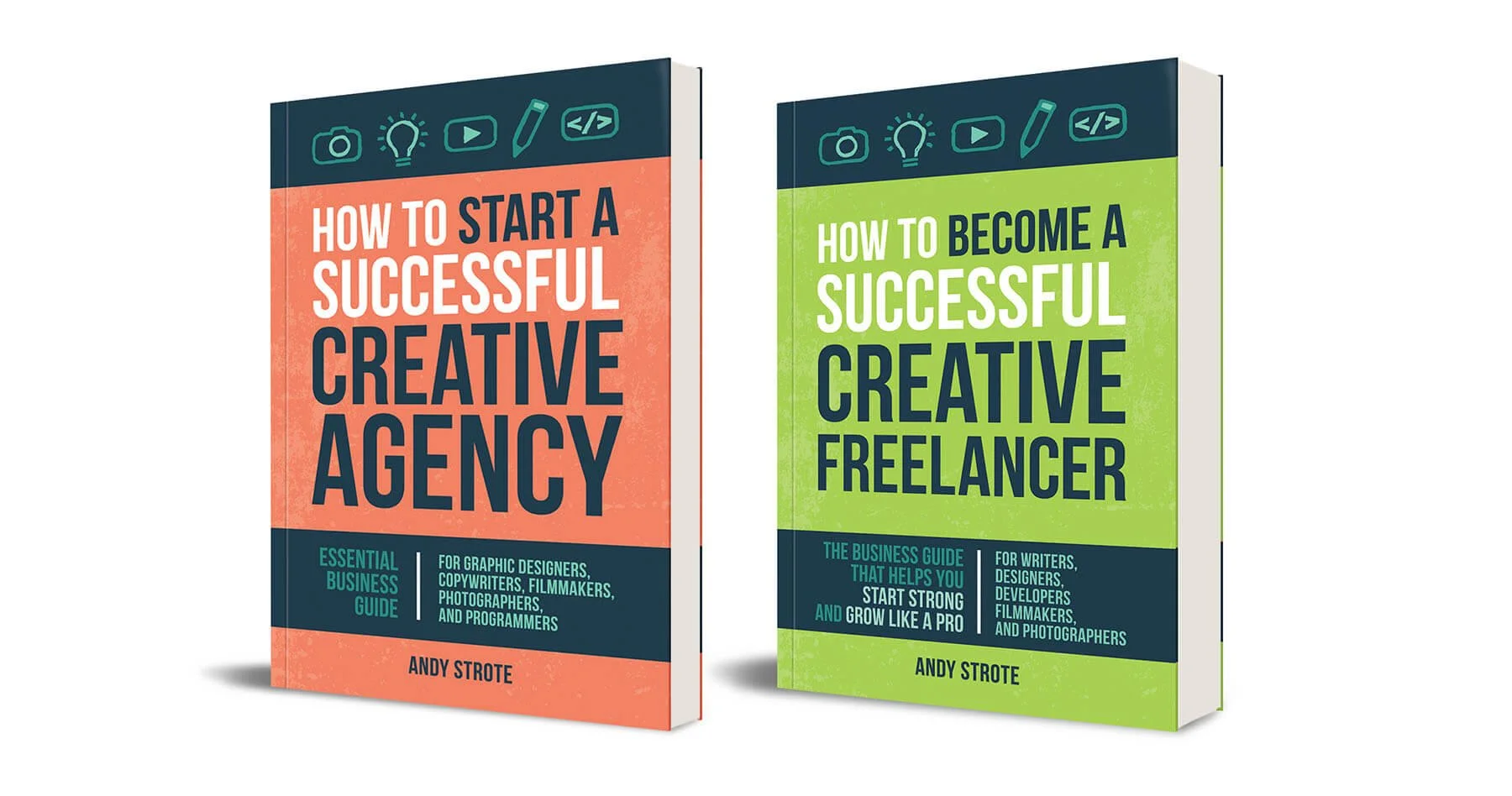How to Turn Your Ideas Into Action
On Twitter, I follow Justin Welch @thejustinwelch. He wrote a thread of 48 points—“every piece of advice I could think of after 4 years as a Solopreneur.”
Some of it resonated with me. I’ll take a few of Justin’s points and expand on them based on my experience freelancing and starting two agencies.
Let’s begin at the end. Justin closes his list with this summary:
“If there is one takeaway, it’s this: Get started. That’s how you’ll figure out your own journey.”
Agree, 100%. Thank you Justin for the prompt.
The Secret to Getting Started? Start Writing
Everyone has ideas, but few can transform those ideas into reality.
Also, not every idea is a good one. How do you know which ones are good ahead of time? You don’t. You can’t be sure. But you need to start anyway.
So, how do you get started?
Here’s the secret: you start writing.
Why does writing matter? Writing forces you to think and make progress. Do you ever get an idea, and it keeps going round and round in your head?
After a while, you realize it’s the same thought, spinning on repeat. You think about it, you daydream, you imagine what life would be if that idea succeeded. But in reality, you’re getting nowhere.
Everything changes once you write down that idea. You’ve captured it. You’ve pinned it down. You have peace of mind. Now you can move on, build on it, make progress.
Start your writing by doing a brain dump. Get your idea and everything you’ve ever thought about that idea on paper. Don’t worry about organizing it yet. Don’t be concerned about repetition. Just get it out.
Do that for at least an hour, probably more. Then go for a walk. Take a notebook and pencil with you. Keep thinking about your idea. I bet you’ll have more thoughts that you hadn’t captured the first time. Write them in your notebook and add them to your brain dump document.
The next day, make a copy of your document and start organizing the information. Bring some structure to your thoughts. Cut and paste to bring similar strands together.
What is the core idea? Who will benefit from it? Why do you think it’s a worthwhile idea? Where are you going to have to do some research? What do you need to make this idea come to life? Expand on your first draft. Don’t worry about over-communicating.
Organize the information in any way that makes sense to you.
Also, don’t be concerned about perfection. It’s just information in a document. You can always edit more later. I’ve often had more than 10 versions of a document. Keep your old versions in case you want to go back.
Once you’ve expanded and organized the information, determine the next logical action to get closer to trying out your idea. Ideally, it’s no-cost or low-cost and something you can do without depending on others for help.
It may require some research and reading. However, be careful not to get sucked into “research over action”.
Use just-in-time learning. Learn what you need, when you need it. Research only enough to get enough information to take the next step.
Also, don’t be too fast to share your idea. Keep your work to yourself for a while. Give yourself the freedom to do whatever you want without any feedback.
This is an exciting stage of any project. Enjoy it. You’ll have plenty of time to gather input from others later. Right now, it’s your idea to work with, play with, turn into something.
Whatever action step is required next, do it. Get used to the feeling of making progress. Relish the endorphin rush of your exploration.
Just keep going, taking one action after another. Trust yourself that if you come up against any roadblocks, you’re smart enough to figure a way around them.
As you develop your idea, you may find it changes shape. That’s okay. That’s the nature of development, iteration, and evolution.
Work on your idea until you get to the point where you can determine whether or not it has a chance for success. Then either do it or let it go.
Important thought: keep your ego in check. Did you work on an idea for a while and then decide it’s not worth pursuing? That’s fine. It’s not a failure. Think of it as an experiment, an exploration. Not all ideas work out. In fact, most of them don’t. Don’t let your ego get in the way. Don’t let your emotions take over. Stay strong for the next idea.
And remember, you can’t do this exercise in your head. You have to write it out.
Last thought: do this once, and it becomes much easier. Always run through your ideas in writing.
Build a Strong Network You Can Call On
Some people are lucky enough to have a network of friends and colleagues from school, their families, or previous jobs. But if you don’t, you have to build the network.
How can you do this?
The easiest way is to join groups online and in real life. If you live in or near a major city, you’ll likely find conferences and groups that meet face-to-face. If you live further away, you’ll have to do this online.
When you join a group, the first task is to listen. Learn the rules of the group, both the written and unwritten ones. Be respectful, be positive, don’t argue. As you get comfortable, start contributing to the conversations. Where possible, help people.
Also, know that in any group, you’ll find people you disagree with and don’t resonate with. They may be negative and pessimistic. (Tip: some people don’t want to call themselves pessimists, so they say they’re realists. Their “realistic view” is that everything is shit.)
Just let them go. Don’t challenge what they say or try to tear them down. It’s not worth the effort or negativity.
One of the unwritten rules of groups is to help 10 times before asking for help. Become visible and respected through the help that you offer.
Soon, you’ll have connections with people you can ask for help in return. You will have earned the right to ask. You may find someone who will be a mentor if that’s what you’re looking for.
Last thought on this: it’s worth traveling to meet people you know online, especially if it’s at a conference. For example, right now, Artificial Intelligence (AI) is blowing up, notably in and around San Francisco. There are meet-ups and conferences nearly every day.
Meeting your online network face to face will strengthen your connection. While you’re there, you’ll also make new connections that you could only make in a live environment.
Keep in mind that although you may have developed an idea you want to pursue, you may meet someone with a stronger idea where you can be part of the team. Or, you may mash your idea with someone else’s and go forward with that.
Networks are one of the keys to success. Every successful entrepreneur has a network.
Gain Confidence by Doing and Participating
Are you an introvert? Do you have ideas, but you’re quietly sitting on the sidelines, not saying much?
That’s good if you’re a novelist but not great if you’re trying to build out a business idea. You’ll have to grow out of that.
You may not morph into the world’s best public speaker, but you must communicate with others who might help you build or become your customers. You’ll likely have to give presentations, even if they’re just one-on-one with someone you want to work with.
Along the way, you’ll have to develop a thick skin. There will be negative opinions, there will be haters, there may even be family members who aren’t supportive. Set them aside. For the purposes of your project, they’re not your people.
If you’re building the right network, you’ll find it easier to talk to them, to interact, to work together on projects. Once you’re on the same wavelength, you’ll feel more confident in your ideas and executions.
Confidence shows and is valued. Others feel good around people who exhibit confidence. It’s not bragging or arrogance, it’s quietly demonstrating that you know what you’re doing.
Confidence comes with writing, a good network, and practice.
You’ll find more about turning ideas into action in my book, How to Start a Successful Creative Agency. It’s the essential business guide for graphic designers, copywriters, filmmakers, photographers, and programmers.
Free 1-Hour Consultation if You Bought One of My Books
I’ve been doing this but haven’t publicized it yet. If you bought one of my books, I’m happy to chat on Zoom, Google, or whatever platform works.
I’ve done it for quite a few people and have enjoyed it. For some, it helps their business or solves immediate problems.
No proof of purchase is necessary. I’ll take your word for it (but I might ask you what you liked most about the book).
So, buy a book and get in touch. If you already own one of the books and want to talk, let me know.
On Bluesky, DM me at @strotebook.bsky.social.
On Twitter, I’m @StroteBook.
On LinkedIn, I’m Andy Strote.
New Book For Freelancers
I’ve just published How to Become a Successful Creative Freelancer. It’s the essential business guide for freelance writers, designers, developers, filmmakers, and photographers.
Whether you’re just starting as a freelancer or have years of experience, you’ll learn a lot from this book.
It’s broken down into easy-to-understand chapters with strategies and tips you can use today. Not just “what to do”, but also “how to do it”.
It’s available now in Paperback and Kindle ebook on Amazon.
Want to Grow An Agency? The Agency Book is For You
If you’re looking for tips on how to build and grow your agency, you’ll want to read How to Start a Successful Creative Agency.
Available at Amazon (Paperback & Kindle ebook), Kobo (ebook), Apple Books (ebook), and Gumroad (PDF).
The book is packed with useful information to help creatives start and grow their agencies.
Get. This. Book.
“Continuing to read @StroteBook and I can’t recommend it enough!
No matter where you are in your journey, it’s got a breakdown on how to take your business to the next phase. Get. This. Book.”
Macklin Youmans on Twitter
Want a Free Taste First?
Sure! Sign up in the footer below for a free PDF of Chapter 14 of the Agency book Working With Clients.
This chapter covers essential areas such as Clients vs. Projects, Corporate Clients vs. Small Business Clients, How to Create an Opportunity Document, the Benefits of Finding a Niche… and much more.
Questions?
If you’re on Bluesky, I’m @strotebook.bsky.social. Ask me anything.
On Twitter, I’m @StroteBook. D.M.s are always open.
On LinkedIn, I’m Andy Strote. Ask away.

